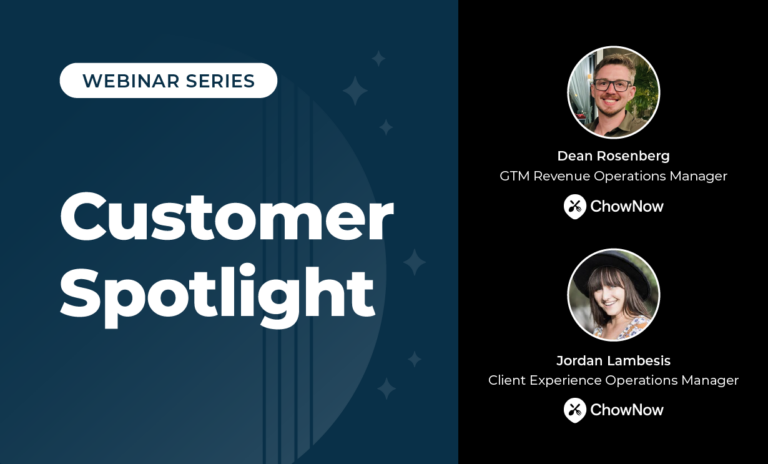Your primary objective as a sales and marketing professional is to drive revenue as a catalyst for your organization’s growth. On the surface it sounds straightforward, but savvy veterans know the road to success is chock full of twists and turns, obstacles and challenges.
Recently, InsideView conducted a survey that returned a relatively surprising finding: the main reason for misalignment across revenue teams is the lack of accurate CRM data and shared views of targeted accounts and prospects. Those findings served as the fundamental topic of the recent OpsStars virtual workshop, “Create Your CRM Data Strategy: A How-To Workshop to Set You Up for Revenue Success,” featuring several members of the InsideView team and their insights, below.
Why you need a CRM data strategy
While CRM data quality and management is typically owned by an organization’s data committee and Revenue Operations team, it’s at the root of the impact and effectiveness of all Sales and Marketing activities. Revenue teams are absolutely dependent upon CRM data to empower their strategies and tactics.
When companies are first going to market, in the very beginning of their growth cycle, they’re usually strapped for resources and have, literally, no time to monitor data. From the very start, critical data becomes problematic, and it never goes away.
As companies grow, and their databases grow proportionally, there are even more data challenges, and that’s before mergers, acquisitions and other market moves add complexity and even more data struggles.
Finally, we all face an increased regulatory environment, with the European Union’s General Data Protection Regulation (GDPR), the California Privacy Rights Act (CPRA) and more impacting our ability to manage data efficiently and effectively to accomplish our goals.
According to that aforementioned survey from InsideView, more than 70 percent of revenue leaders say data management is a high priority. Here’s the thing though: more than 65 percent confess they do almost nothing about it!

There’s been a transformation of B2B buying behaviors over the past several years, and the global coronavirus/COVID-19 pandemic has only supercharged digital B2B buying behaviors. It’s a big change, and one that isn’t likely to revert back. Your customers have changed they way they buy, and traditional B2B models need to be abandoned in light of the following:
-
- Program spend is increasingly wasted as only 5 percent of site visitors fill out forms
- Prospects increasingly bounce when their needs are not immediately met
- Opportunities to sell fail to materialize as 38 percent of leads are never connected with and engaged
Today’s go-to-market strategies revolve less and less on linear, funnel-based approaches, and more on looping processes anchored around finding, engaging, closing and growing business.

Demand Generation for demanding times
To best their competitors, GTM teams are now doubling down investments into account-based marketing (ABM) strategies, but, it’s more than just marketing – it’s account-based engagement. However, while the GTM model might be different, they’re faced with the same challenge of being hampered by poor quality data.
It might go without saying, but account-based engagement requires a pivot to being account-centric in all GTM activities, and engagement needs to be coordinated through unified data, technology and teams. At the center is a single account view, providing visibility and accountability so your teams can align to identify key accounts.

A common problem among ABM practitioners is that Marketing, Sales and Customer Success tools and processes are fragmented, while still being reliant on digital data. To truly power ABM, especially at scale, Marketing, Sales and Customer Success must be aligned around data.
ABM success relies on data
In those high-value accounts you’re targeting with ABM initiatives, buying decisions are rarely made by a single individual. Rather, buying decisions are finalized through a buying committee, consisting of many different decision-makers and influencers.
In the past several years, buying committees have grown on average from five people to eight, and associated influencers have grown from six or seven to now a dozen or more. Typically, however, companies only have two or three individuals from an account in their databases!
In building out your ABM strategies, focus on developing the data-based insights you need to be effective. By looking at your current customers, build out your Ideal Customer Profile (ICP), or the “who” you want to engage. Armed with that information, set your designs on defining your Total Addressable Market (TAM) by identifying all the accounts that fit your ICP profile and using data tools to build out information on your targeted accounts, including:
-
- Account firmographics – descriptive attributes of organizations used to both segment and target potential prospects
- Account hierarchies – structuring complex organizations into simple parent-child relationships, to break down business units, locations, departments, or any other helpful classifications
- Lead-to-Account mapping – automating the connection of leads to the accounts they represent in your CRM
With that, it’s time to reach out and engage your targeted accounts, one by one.

Getting your data in shape for ABM
The quality of your data will determine your ABM effectiveness. To set your motions up for success, utilize the following checklist to get your data in shape:
-
- Look for data gaps – fill in accounts that are missing, and ensure you have a rich profile for each.
- Look at recency -establish a maximum age for your data and build a plan to keep it refreshed.
- Eliminate duplicate records – merge duplicate records to one to avoid artificially inflating your potential market while sparing leads too many redundant touches.
- Map leads to accounts – ensure you have visibility into the entire account regardless of lead and contact status.
- Ensure your account hierarchies are in shape.
OpsStars is the only community dedicated to the field of B2B Revenue Operations, bringing together Ops professionals to share ideas and successes on topics around implementing complex go-to-market strategies, aligning revenue teams, driving organizational growth, and career development.
Connect with the OpsStars community on Slack to network, share and learn best practices, identify new trends, and accelerate towards operational excellence.







